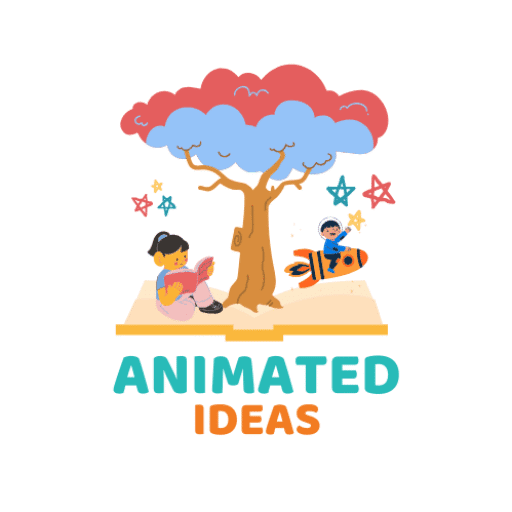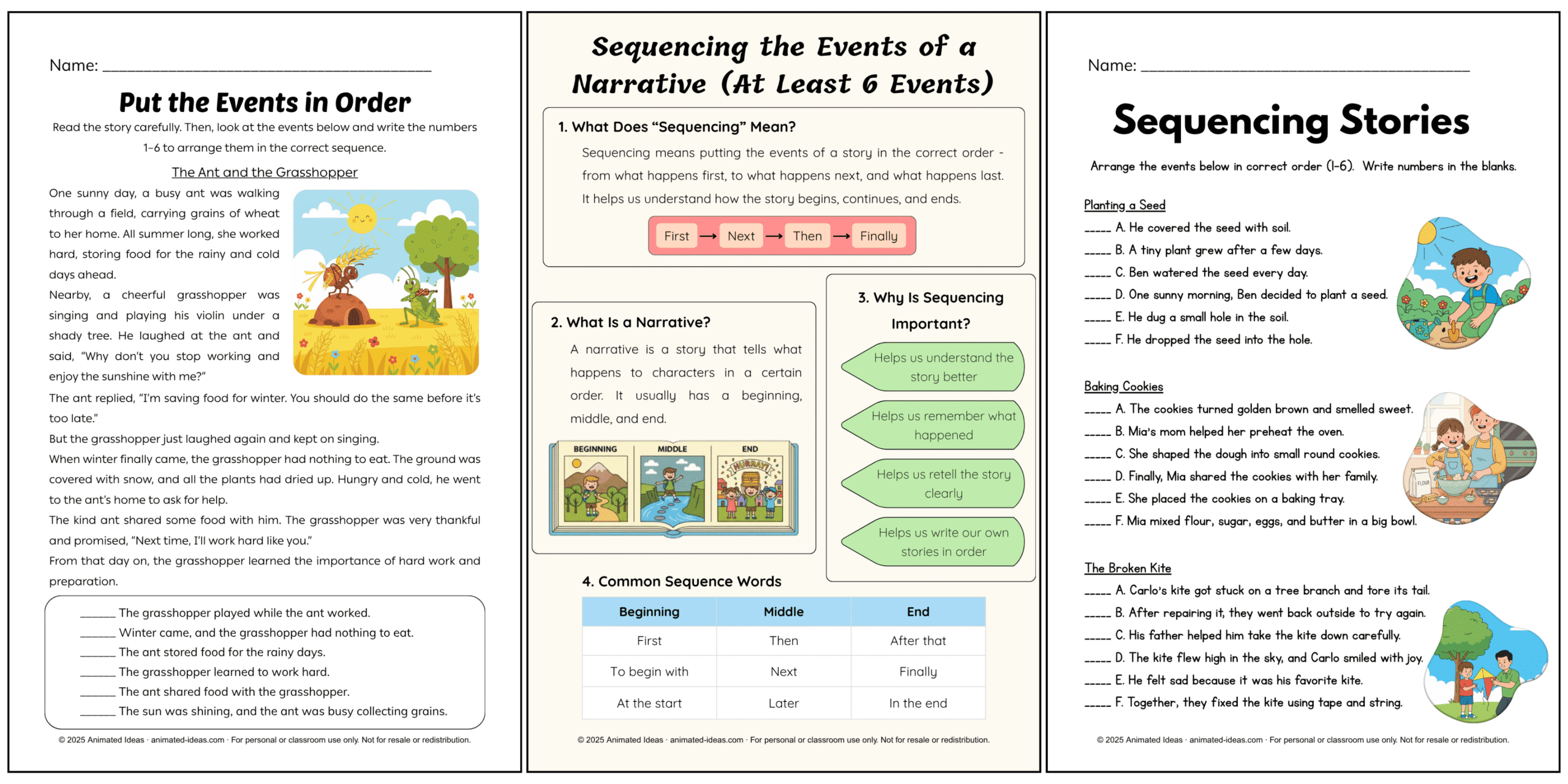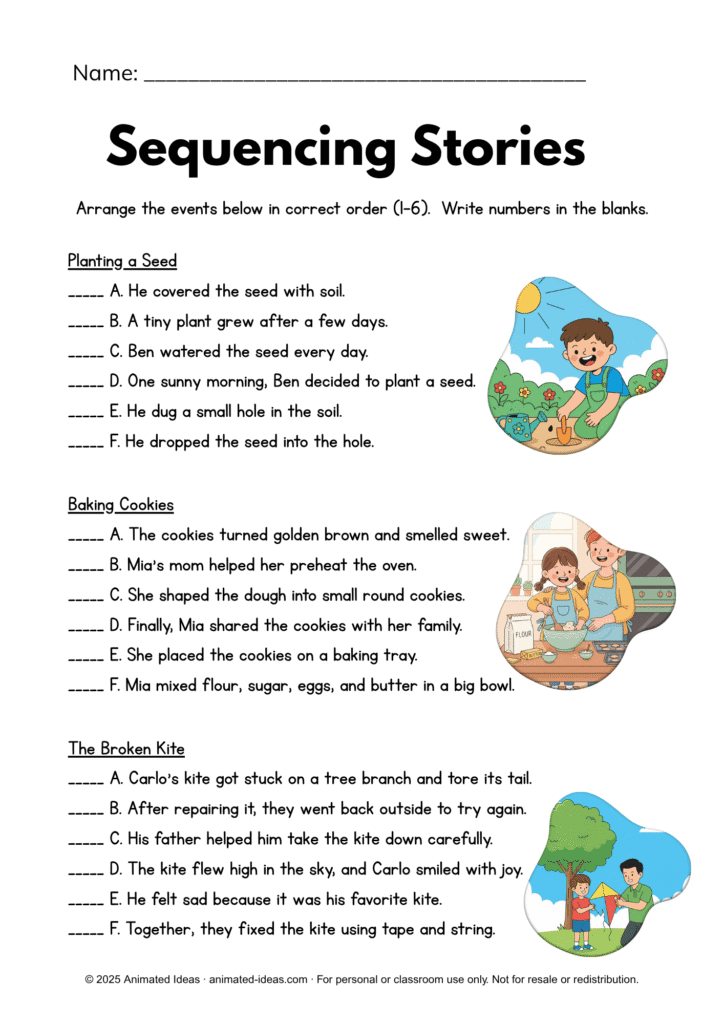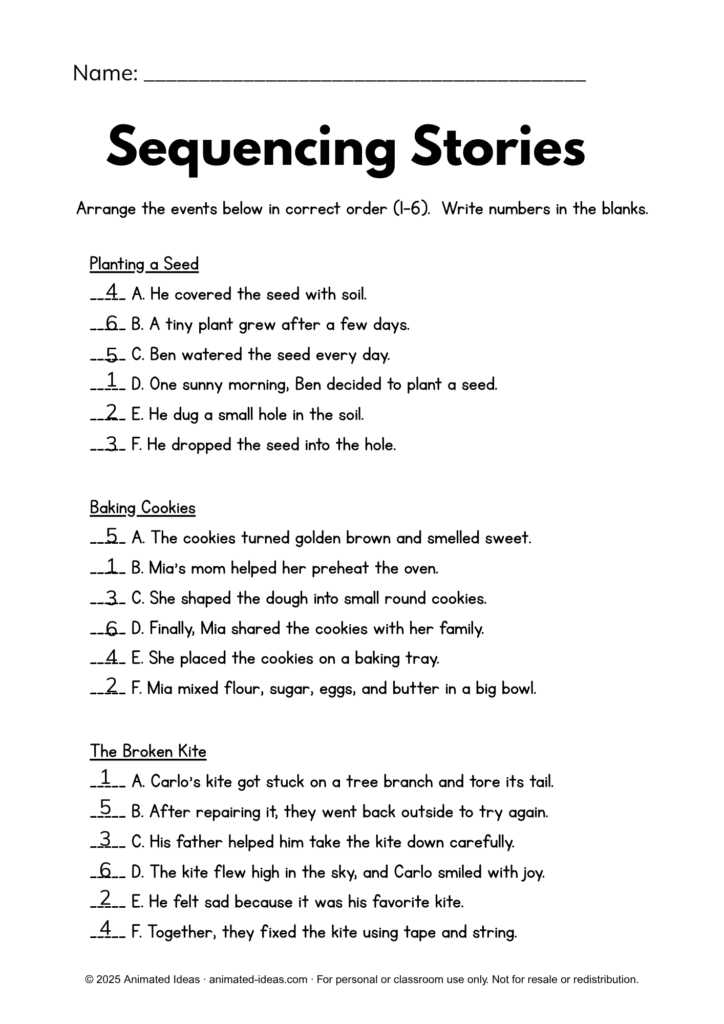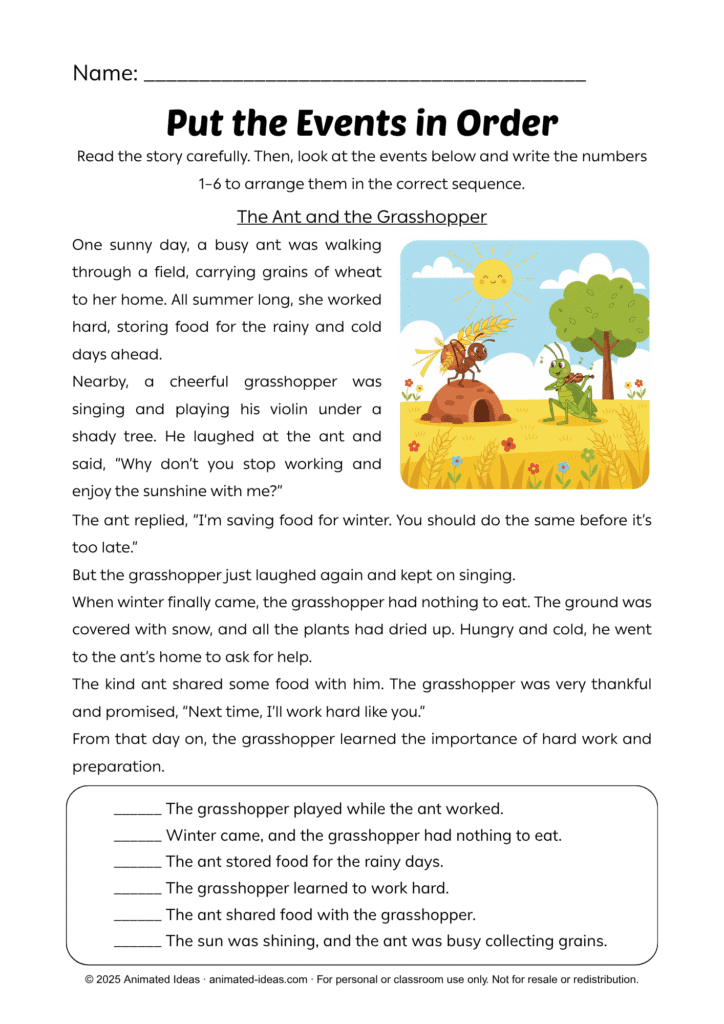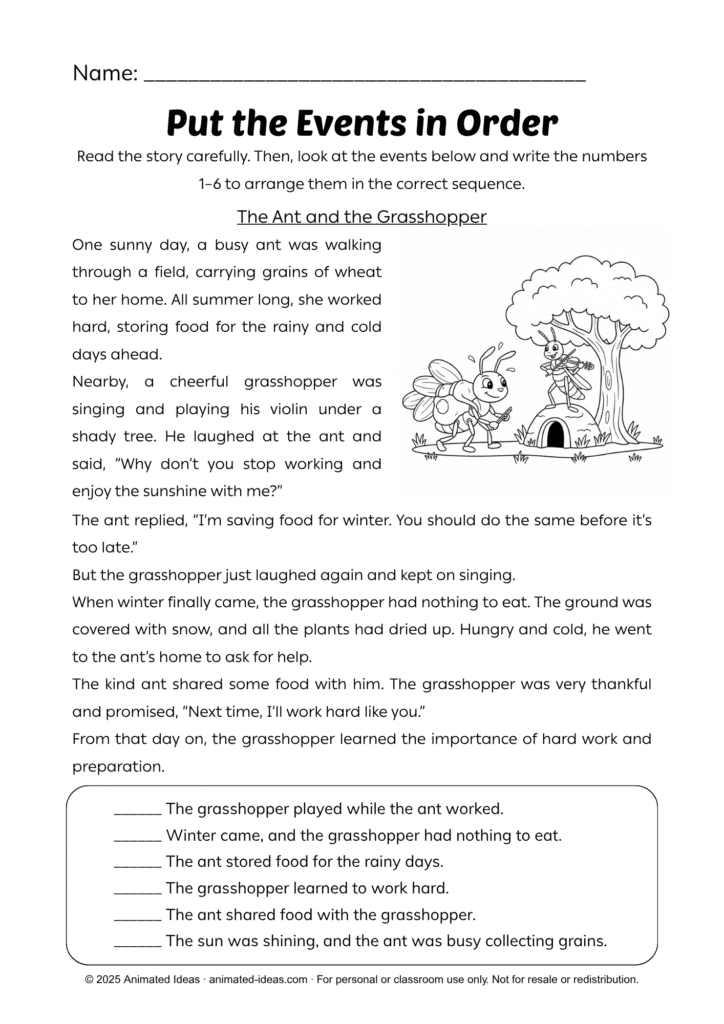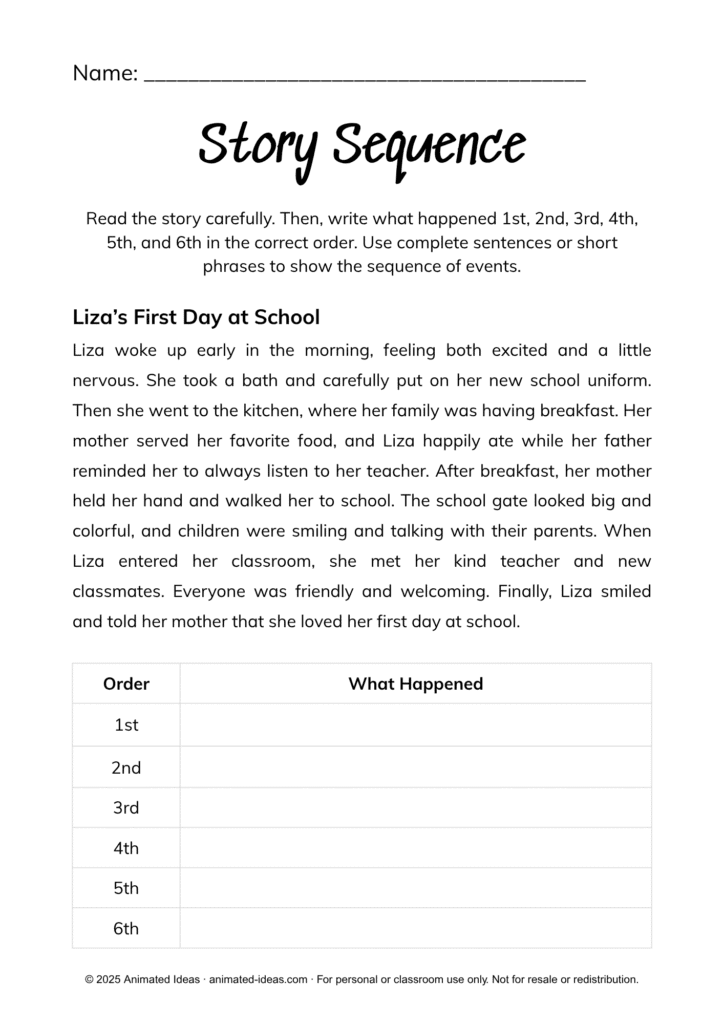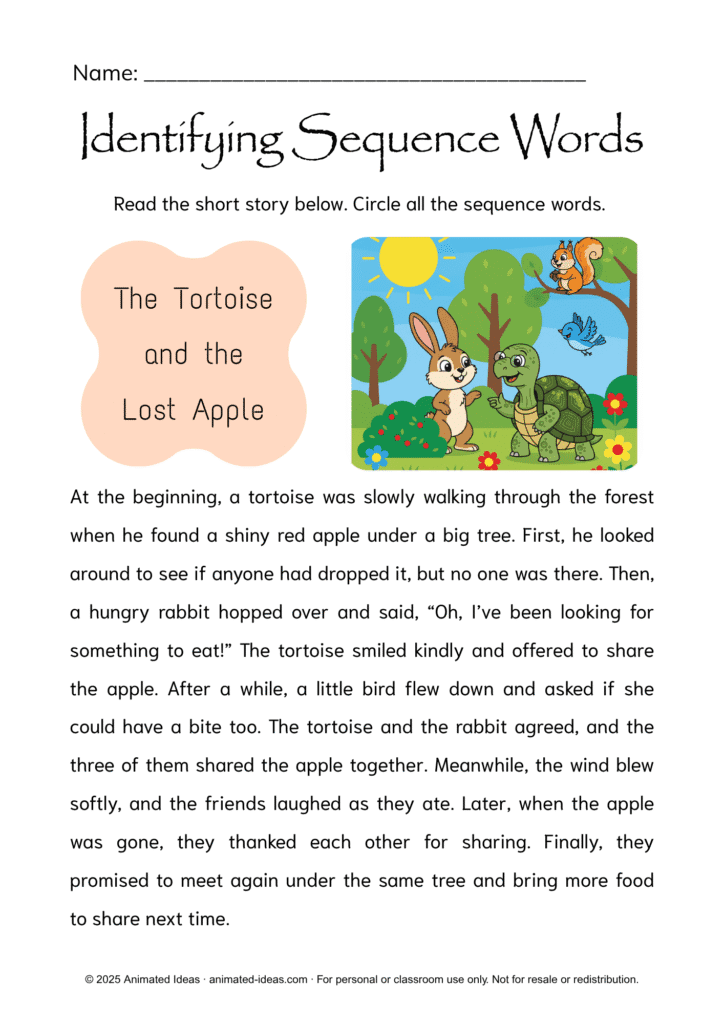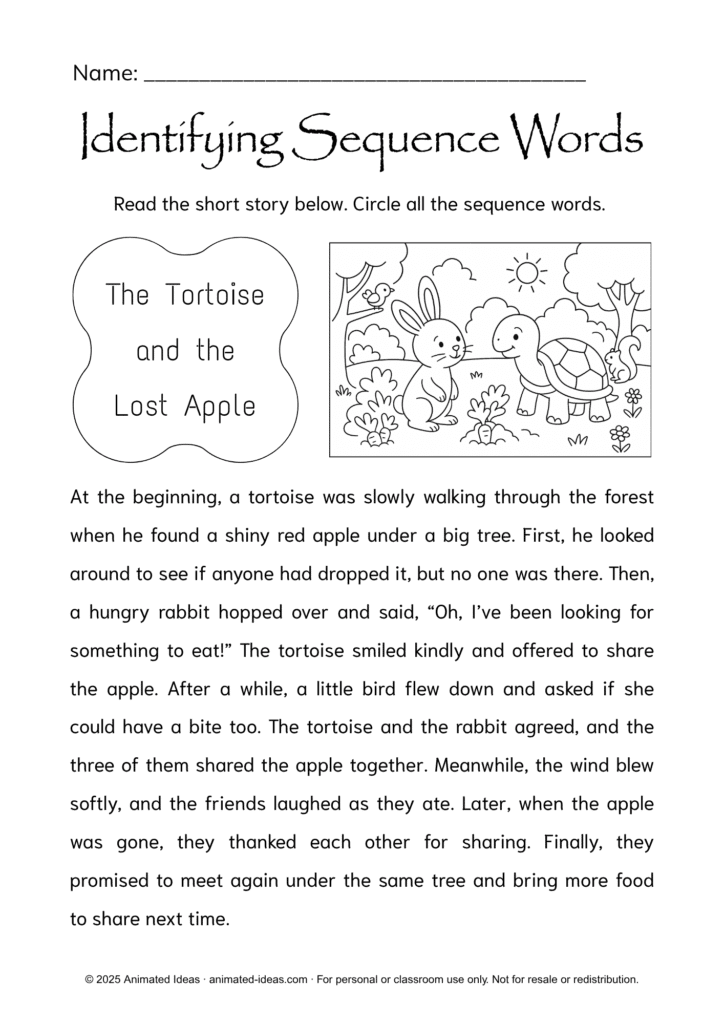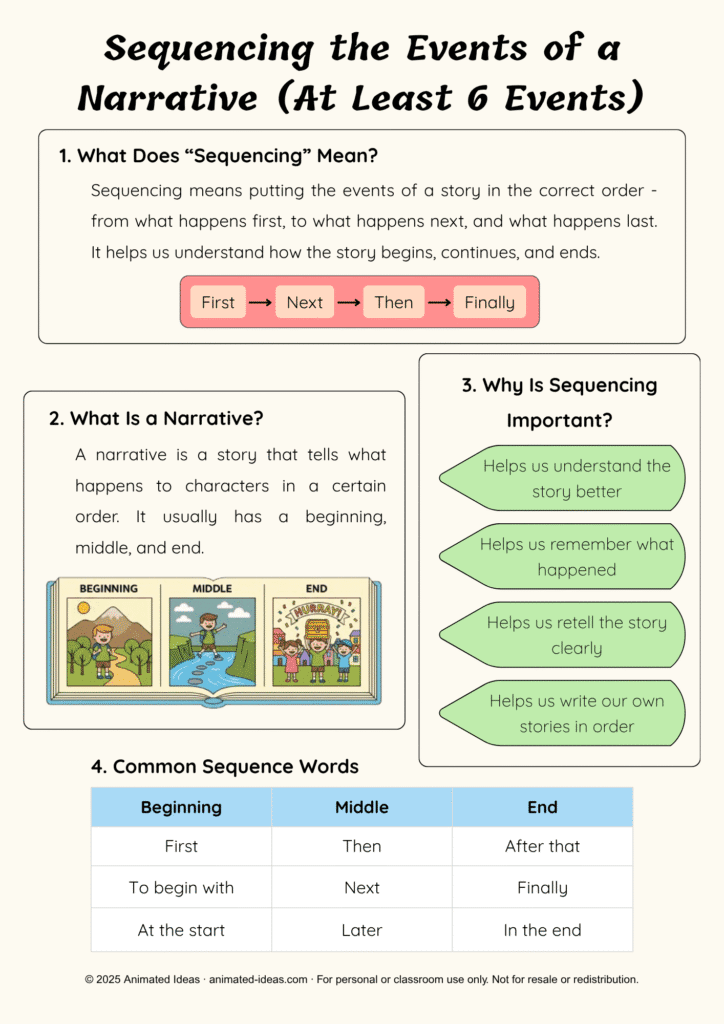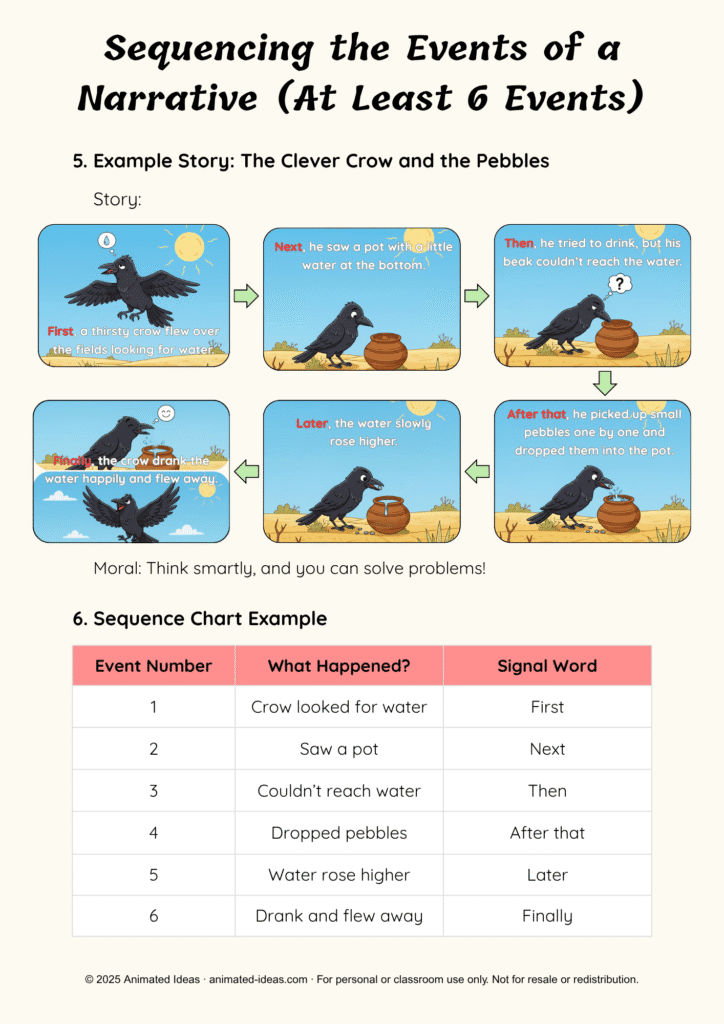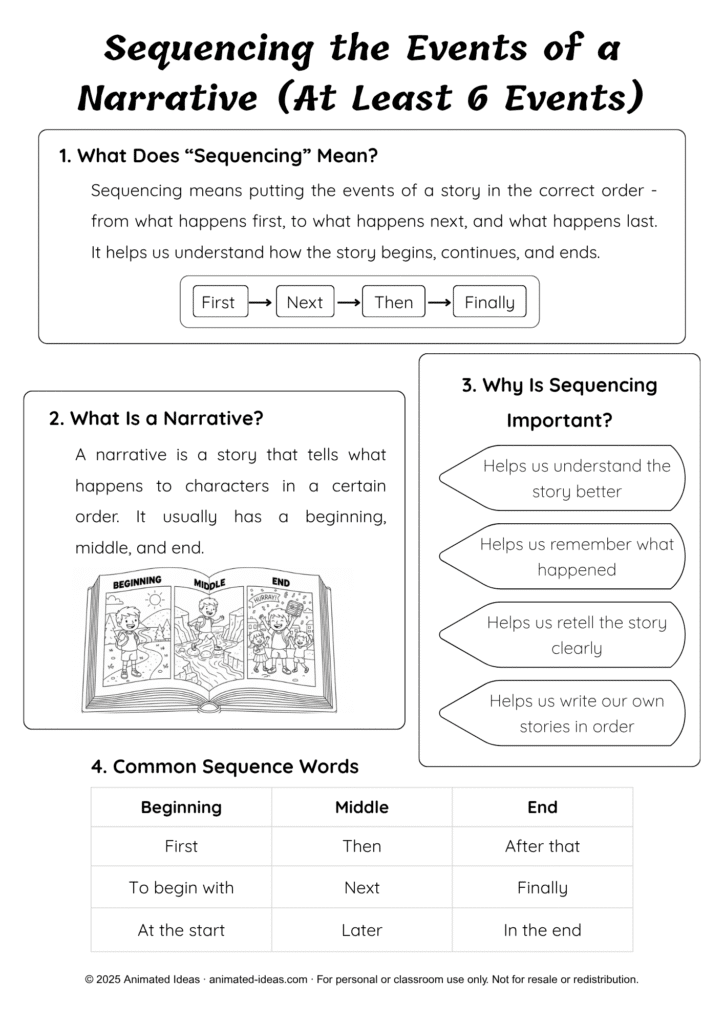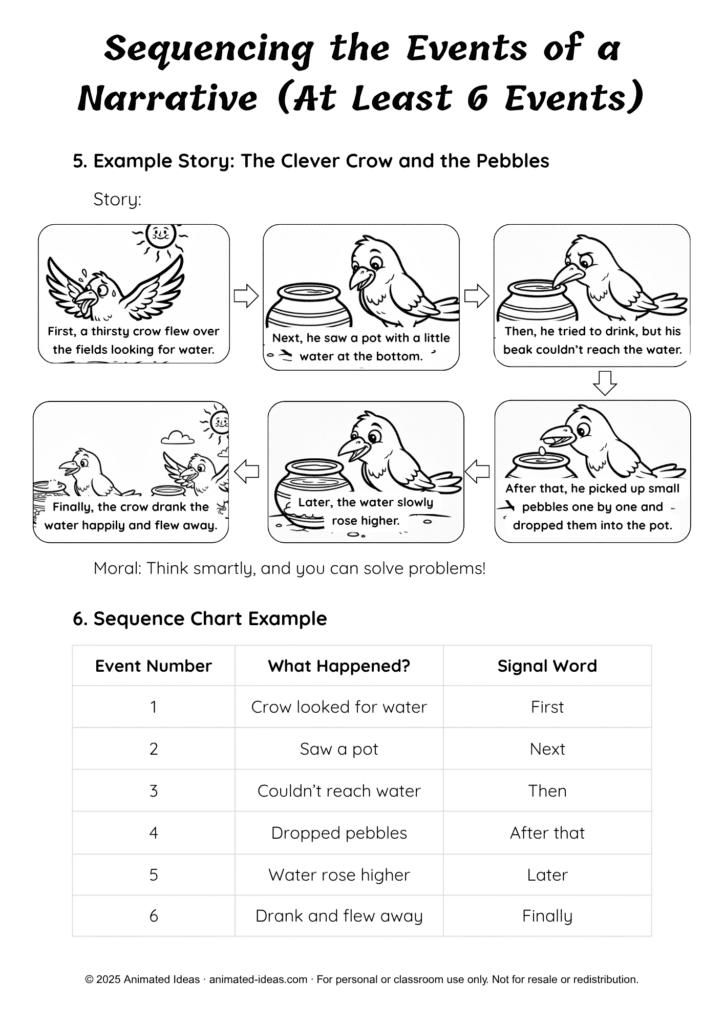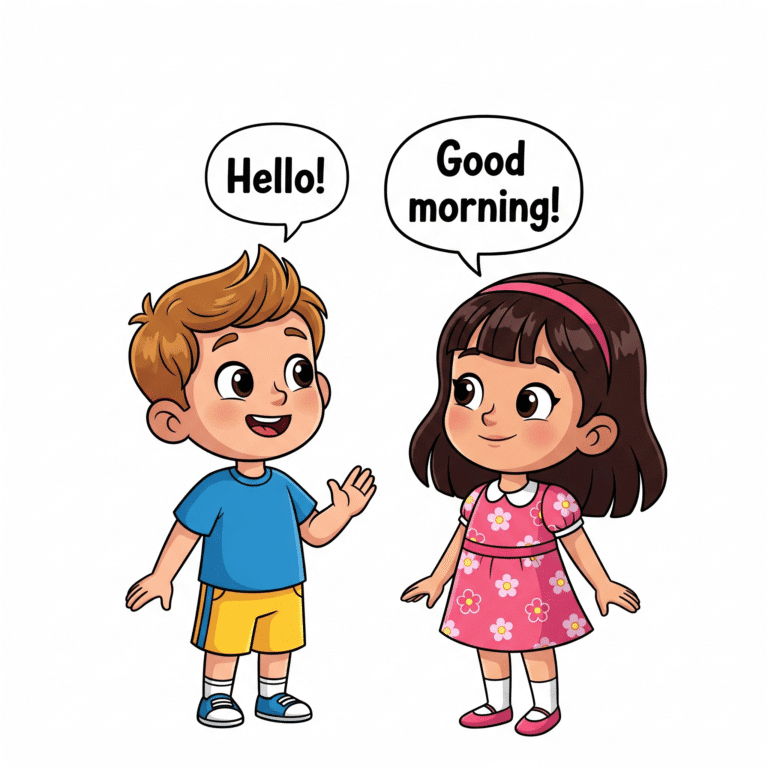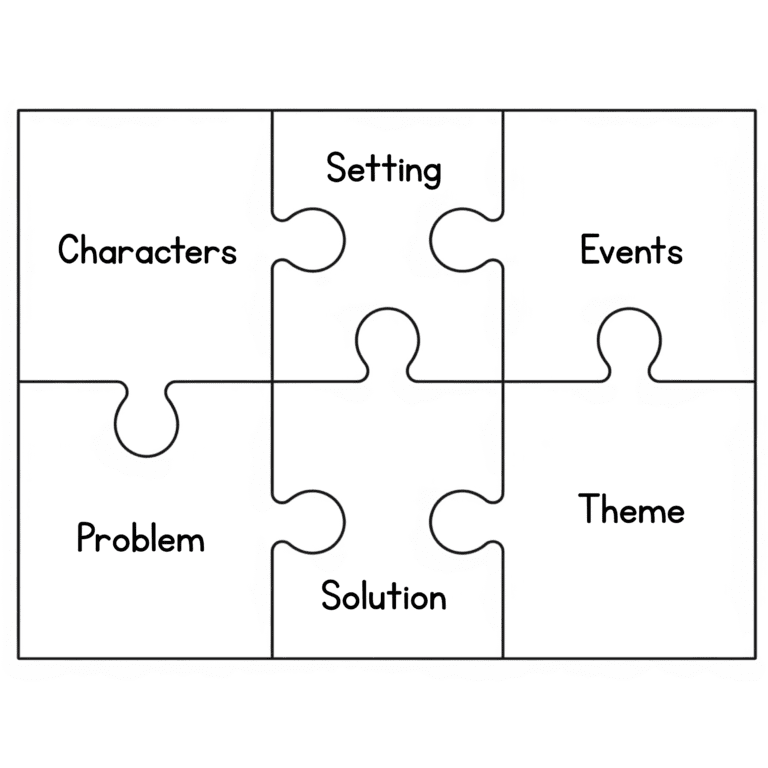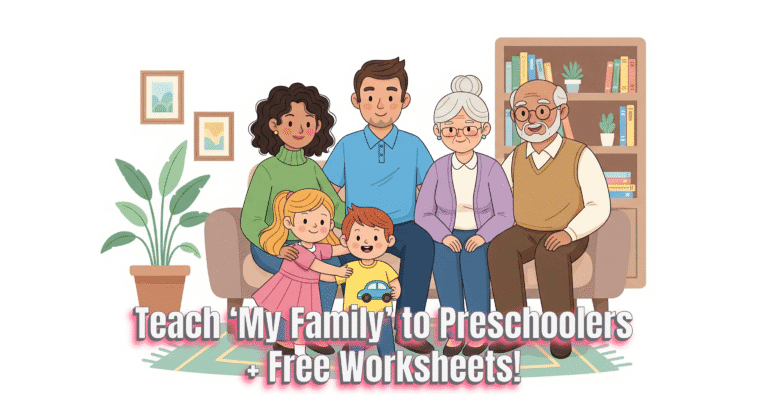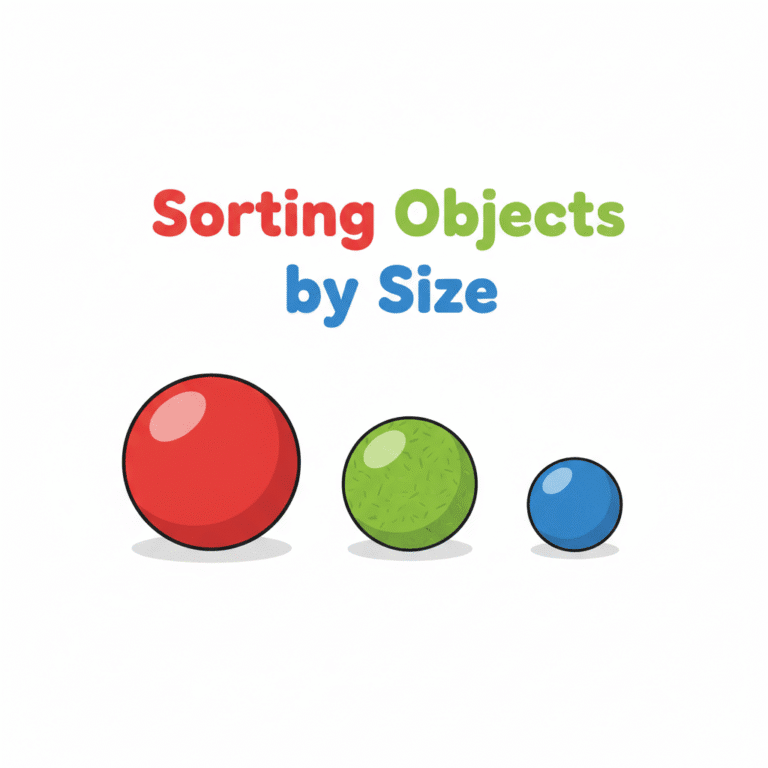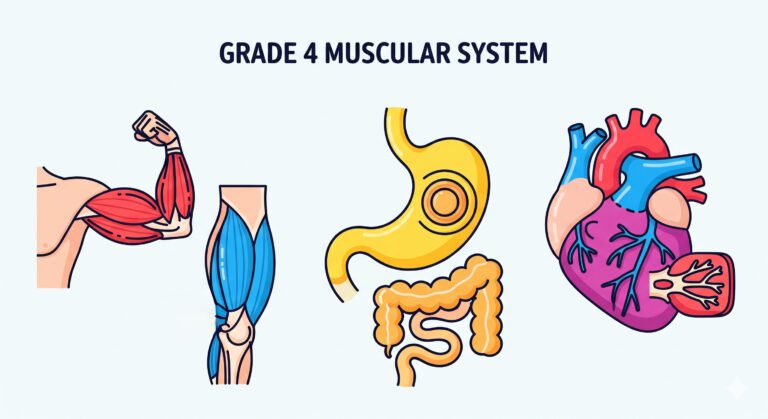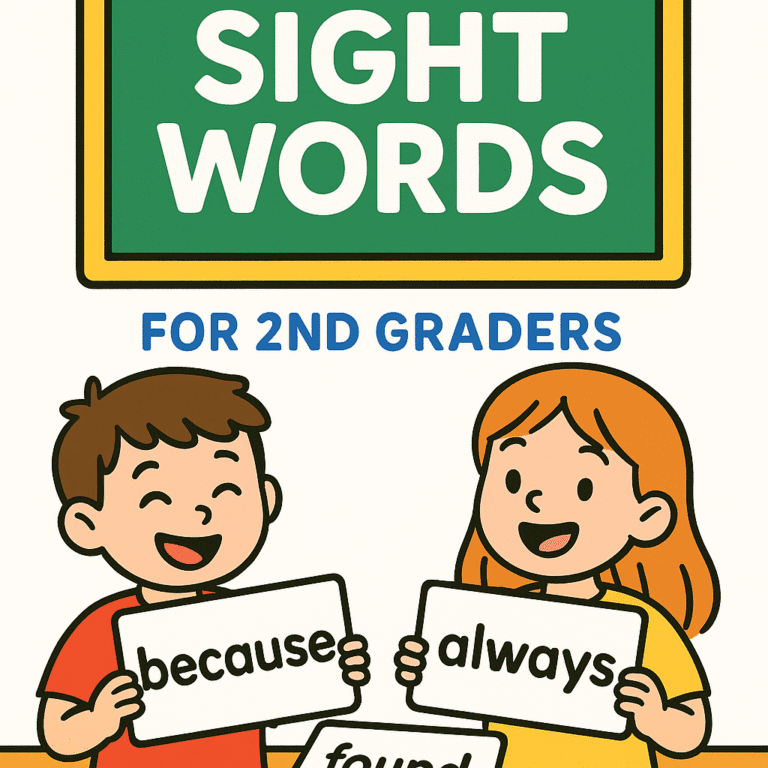Story Sequencing Guide for Grade 4 – Learn How to Order Events
Story Sequencing Guide for Grade 4 – Learn How to Order Events
Have you ever read a story and wondered, “What happened first, and what happened next?”
This Story Sequencing Guide for Grade 4 will help you understand how to arrange story events in the correct order — from beginning to end.
In this guide, you’ll learn what story sequencing means, why it’s important, and how to use signal words to follow the flow of a story. You can also download free printable notes and worksheets to help you master sequencing easily.
These materials include fun activities, colorful visuals, and simple fables to help you practice sequencing easily.
What Is a Narrative?
A narrative is another word for a story.
It tells about characters (people or animals), a setting (where and when the story happens), and events (the things that happen in the story).
A good narrative has a beginning, a middle, and an end.
What Is Story Sequencing?
Story sequencing means putting the events of a story in the order they happened.
It helps us understand the story better and remember it clearly.
When you read, always ask yourself:
- What happened first?
- What happened next?
- What happened last?
Why Sequencing Is Important
Sequencing is important because it helps:
🧠 Readers understand the story better.
🗣️ Students retell stories in the right order.
✍️ Writers organize their ideas clearly.
If a story’s events are mixed up, it can be confusing and hard to follow.
That’s why we always arrange the events in sequence — just like steps in a process or instructions in cooking.
Example of Sequencing Events
Let’s look at a short story example.
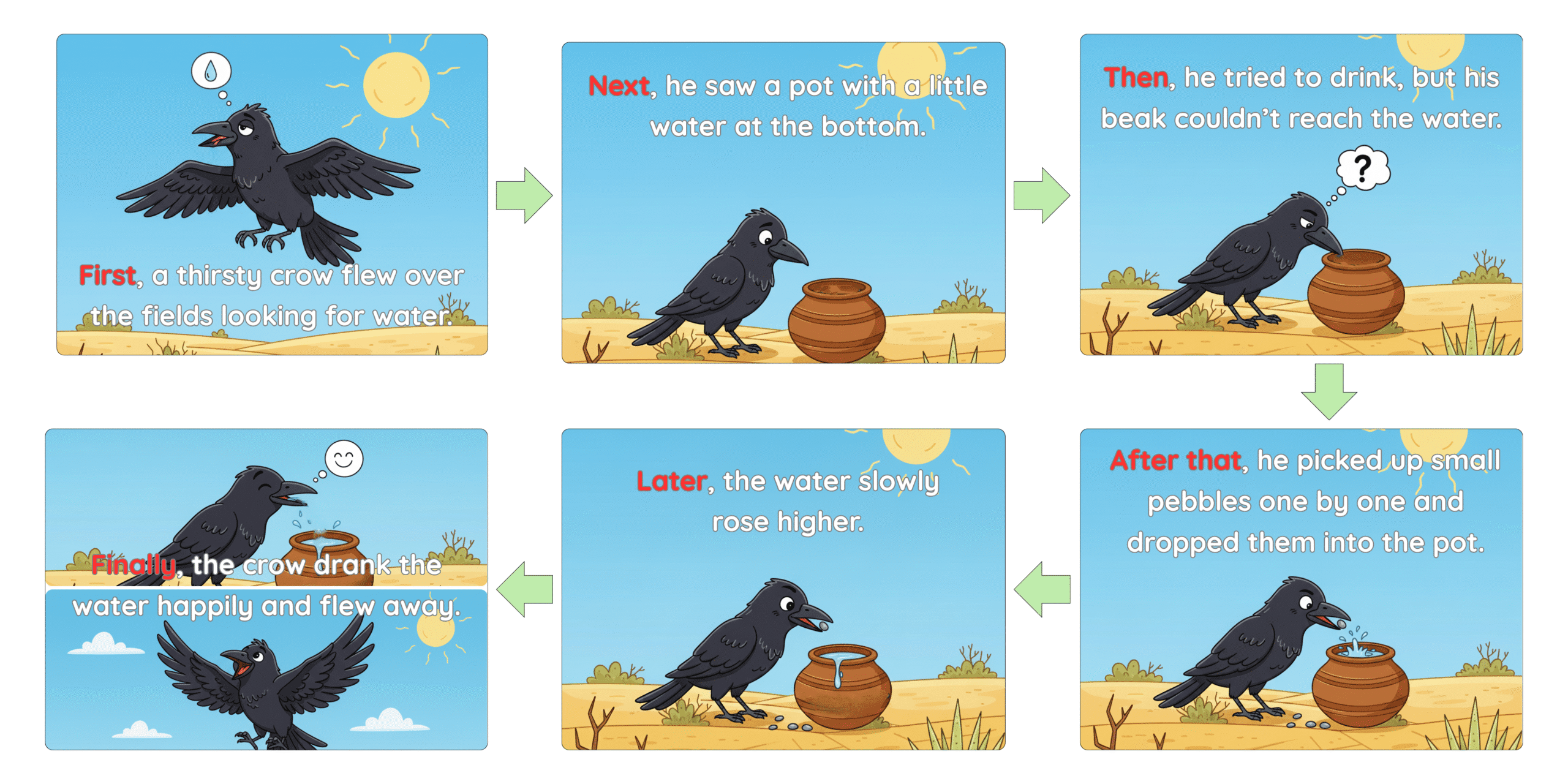
In this story, there are six events that happen one after another.
Each event is part of the story’s sequence.
Sequence Chart Example
Let’s look at the correct order or sequence of the story’s events.
| Event Number | What Happened? | Signal Word |
|---|---|---|
| 1 | Crow looked for water | First |
| 2 | Saw a pot | Next |
| 3 | Couldn’t reach water | Then |
| 4 | Dropped pebbles | After that |
| 5 | Water rose higher | Later |
| 6 | Drank and flew away | Finally |
When the story’s events are arranged in this order, we can clearly see the story’s flow — from beginning to end.
Using Signal Words
Signal words help us show the order of events in a story.
They act as clues that guide readers through what happens first, next, and last.
Here are common signal words you can use:
| Beginning | Middle | Ending |
|---|---|---|
| first, to begin with, one day | next, then, after that, later | finally, in the end, at last |
Using signal words helps us connect the events smoothly, just like connecting puzzle pieces to form a complete picture.
Connecting Sequencing to Real Life
Sequencing doesn’t just happen in stories—it also happens in our daily lives!
For example:
- When we get ready for school, we wake up → take a bath → eat breakfast → go to school.
- When we plant a seed, we dig the soil → put the seed → water it → wait → watch it grow.
- When we cook rice, we wash the rice → add water → cook it → wait until done.
Just like in stories, order matters in real life too!
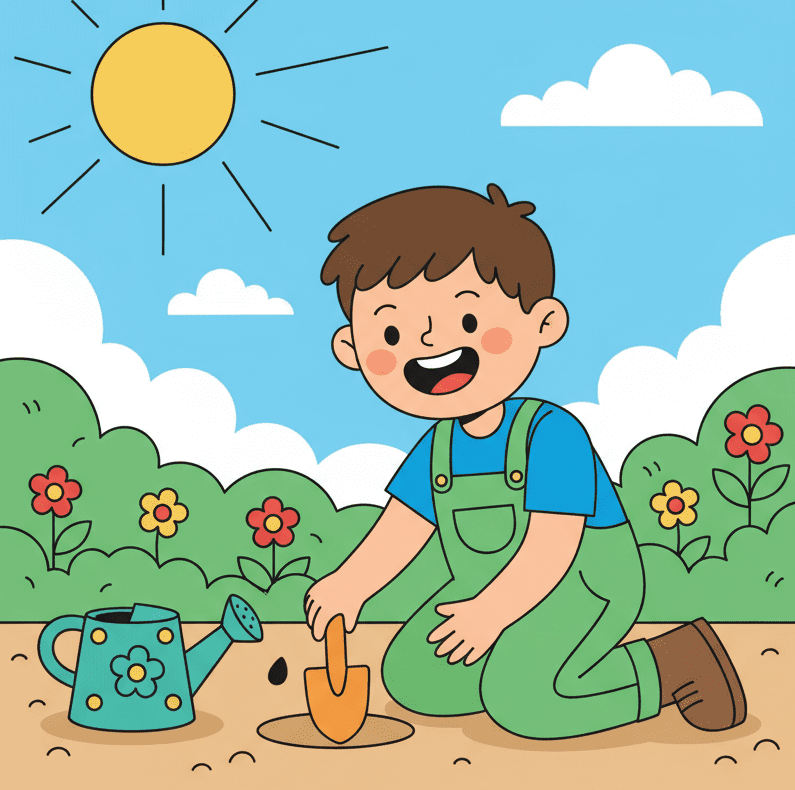
Summary of the Lesson
Sequencing the Events of a Narrative (At Least 6 Events) means arranging what happens in a story in the correct order — from beginning to end.
It helps readers understand the story clearly and helps writers organize their ideas properly.
✅ A narrative is a story with a beginning, middle, and end.
✅ Sequencing means putting story events in order.
✅ Use signal words such as first, next, then, after that, later, and finally to show the correct sequence.
✅ A well-sequenced story is easy to follow and fun to read!
Keep practicing with this Story Sequencing Guide for Grade 4 until you can retell any story smoothly from beginning to end.
More Learning Guides from Animated Ideas
If you enjoyed this guide, check out these lessons too:
Story Elements
Root Words, Prefixes, Suffixes – Structural Analysis
Grade 4 Printables and Worksheets
💡Each guide helps you build stronger reading and writing skills.
Connect with Animated Ideas
Find more free lessons and educational resources:
- YouTube: Animated Ideas
- Facebook: Animated Ideas
- Pinterest: Animated Ideas
